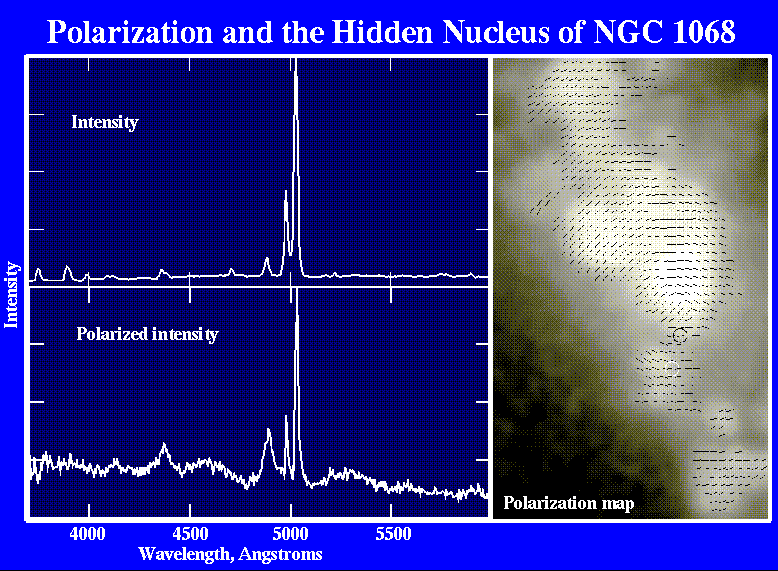
A crucial development in understanding Seyfert galaxies came with the recognition that at least some type 2 Seyfert nuclei are in fact type 1 objects for which our view of the innermost region is blocked by a dust- and gas-rich obscuring torus. The key observations involved measurements of polarization - the fraction of the energy carried by light waves with the electric and magnetic fields oriented in various directions. Light may be polarized in several ways, the most familiar of which is by scattering or incoherent reflection - the way polarizing sunglasses work. In NGC 1068, combination of polarization and spectroscopic measurements (spectropolarimetry) produced the remarkable fact that the polarized light from the nucleus resembles a type 1 Seyfert, complete with broad Balmer lines of hydrogen and forests of blended Fe II emission at 4500 and 5300 Angstroms, while the ordinary intensity spectrum is the original type 2 with virtually no Fe II and much narrower hydrogen lines. This was interpreted as coming from dusty clouds that are placed directly in the radiation field of the nucleus, so that we see the nuclear light scattered by dust. A striking confirmation that the nucleus is responsible comes from an HST measurement of the polarization at every point near the nucleus. Shown as electric-field direction vectors superimposed on the image, they show the characteristic pattern of concentric arcs which results from scattering by a source in the center, and points to the same center as the radio jets and tracing backwards from the conical distribution of ionized gas around the nucleus. Recent radio observations may have in fact seen the obscuring material (slide 11).
The spectropolarimetry is taken from Miller, Goodrich, and Mathews 1991 (ApJ 378,47), with the data provided by Bob Goodrich. The HST imaging polarimetry came from Capetti et al 1995 (ApJLett 452, L27), and was kindly provided by Alessandro Capetti.